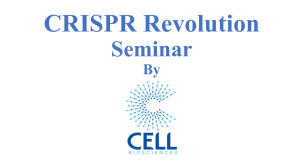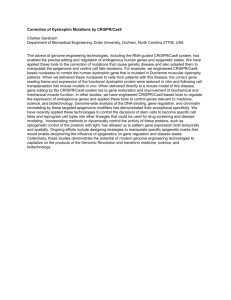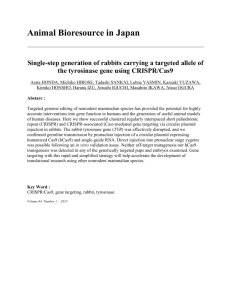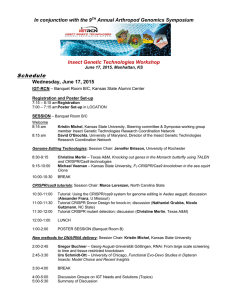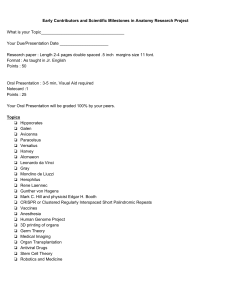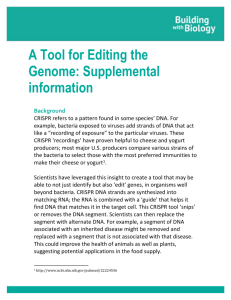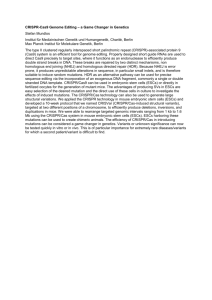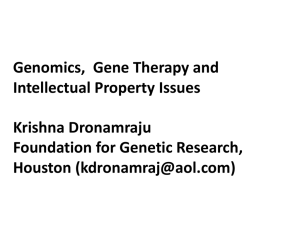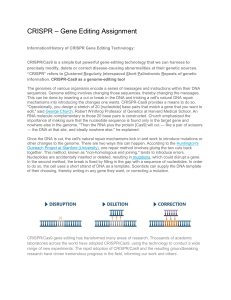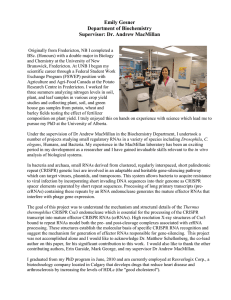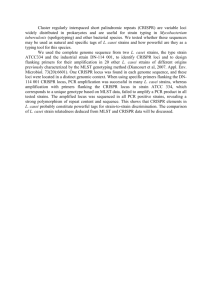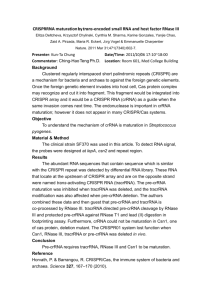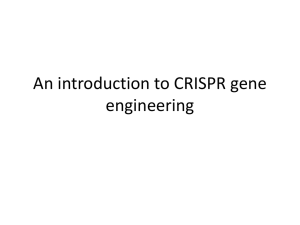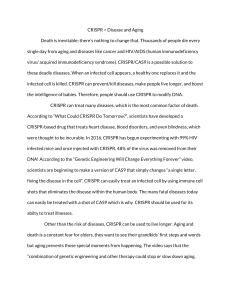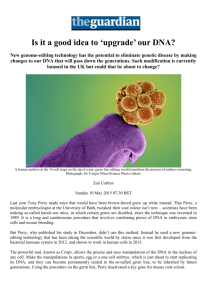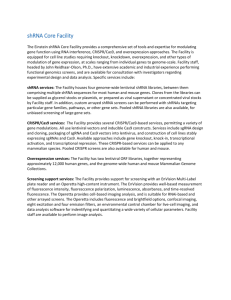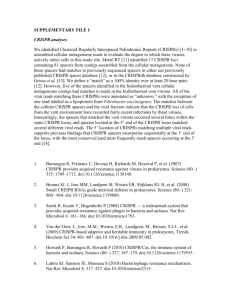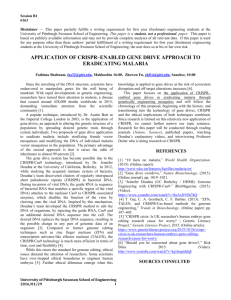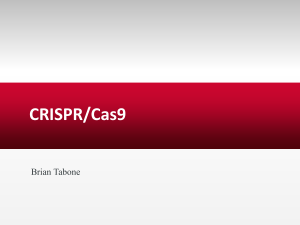Instruction Manual ()
advertisement
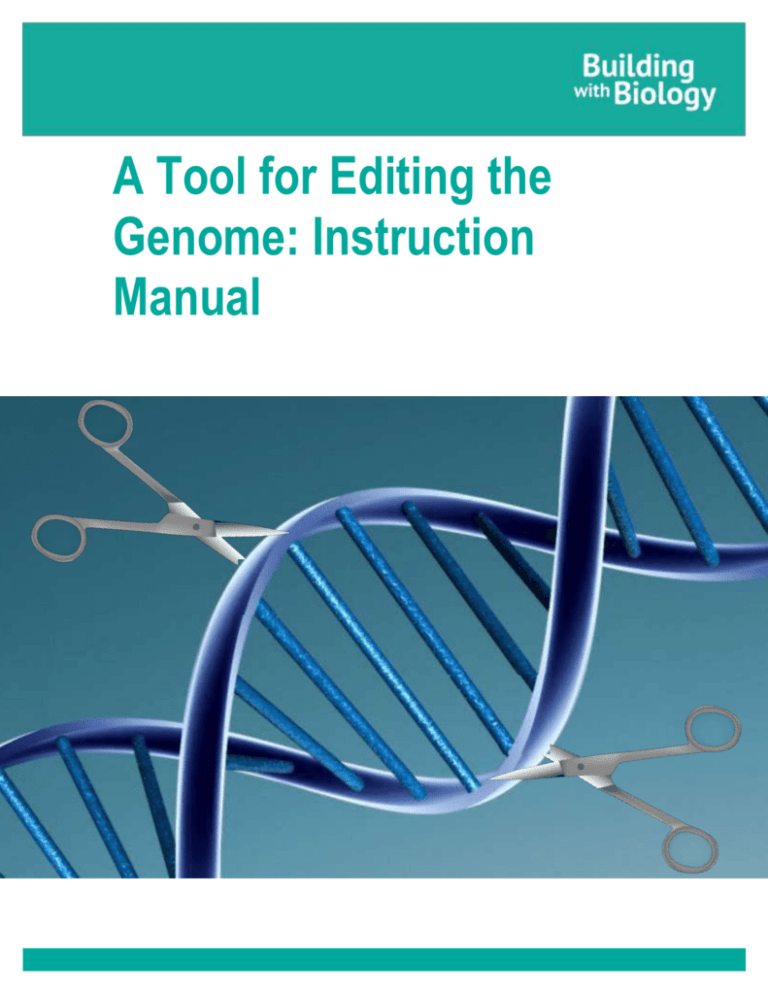
A Tool for Editing the Genome: Instruction Manual Background and Benefits Scientists have been able to genetically modify living things by cutting and pasting DNA since the 1970s. In 2013, scientists developed a new technique for genetic modification that uses repeating patterns in the DNA of many species. This new technique is called the CRISPR/Cas system (called CRISPR, pronounced “crisper,” for short). CRISPR works like a search-and-replace tool in a word processor and allows scientists to edit genomes with much more precision, efficiency, and flexibility than they had with prior techniques. It is also faster, lower cost, and easier to use. Using this technique, scientists can add, change, or take out genes that make up the DNA of living things. For example, a segment of DNA linked to an inherited disease could be removed and replaced with a segment that is not linked to the disease. This could improve the health of animals and plants, with potential applications in the food supply. Changes made with this technique may be permanent and can be passed down to future generations. The CRISPR technique is only useful where the connection between genes and the desired or undesired characteristic is well understood. For example, scientists have identified the gene that may carry a mutation that leads to a person having the deadly disease sickle cell anemia. It should be relatively straightforward to use CRISPR to remove the mutated gene and replace it with an unmutated one. On the other hand, a mosquito’s ability to find humans has not been mapped to specific gene(s) and likely involves a combination of genes. Using CRISPR to remove the mutated sickle cell gene and replace it with an unmutated one should be much simpler than the mosquito example. Safety There are many things to consider when using this tool. It is still a very new technology with many unexplored risks. Some people fear that the tool is so effective and easy to use that people may use it before its safety can be assessed. Others worry about whether the tool should be used in certain circumstances, or at all. Some policy makers recognize that release and application of this technology fall outside the scope of many current regulations addressing genetic modification. Many of the useful aspects of the CRISPR technique also cause some concern: faster, lower cost, more accessible techniques may mean more people editing genomes, including those with less scientific or ethics training. When processes like gene editing happen outside of wellregulated environments, there are fewer traditional safeguards in place to ensure compliance with ethical norms. The technology occasionally cuts DNA in unintended places when the target gene is too similar to other sequences in the genome. Unlike other techniques, CRISPR leaves none of the specific identifying markers that other forms of genetic modification do. This makes it more difficult to monitor and regulate its use.
